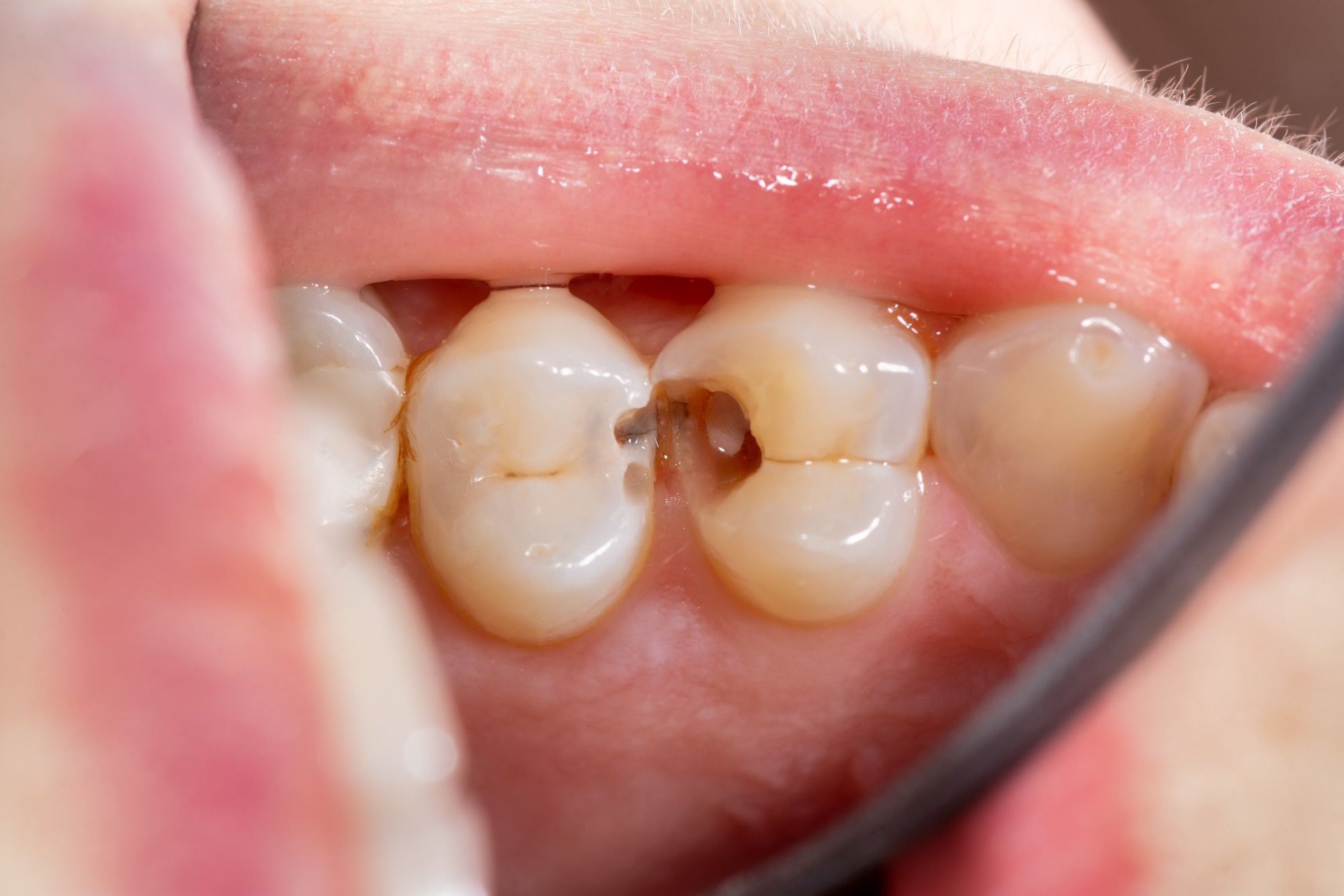In a recent systematic review published in the journal JAMA Network, researchers synthesized available literature on interventions aimed at preventing oral health issues, especially dental caries, in young people between the ages of five and 17. They identified three systematic reviews, 22 clinical trials, and an observational study comprising over 35,700 participants. Their findings revealed that fluoride gels and supplements, varnish, and sealants helped improve caries outcomes and overall oral health. Though aimed at informing the US Preventive Services Task Force, these findings provide valuable details for schools and dental practitioners tending to children and adolescents in this age group.
 Study: Screening, Referral, Behavioral Counseling, and Preventive Interventions for Oral Health in Children and Adolescents Aged 5 to 17 Years. Image Credit: Sergii Kuchugurnyi / Shutterstock
Study: Screening, Referral, Behavioral Counseling, and Preventive Interventions for Oral Health in Children and Adolescents Aged 5 to 17 Years. Image Credit: Sergii Kuchugurnyi / Shutterstock
Oral health issues in children
Children and adolescents are highly susceptible to oral health issues, resulting in decreased well-being and pain-related aversions to solid food. Dental caries is the most common of these dental conditions, caused by tooth-adherent cariogenic bacteria that metabolize sugars to produce acid. The acid, over time, demineralizes tooth structure, causing cavities, pain, and oral disability.
Oral health services in school-aged children exhibit disparities associated with location, race/ethnicity, parental education, and socioeconomic status. Providing oral health interventions such as dental screening and preventive education in schools and colleges could bridge this gap, thereby improving children’s quality of life.
The present study was conducted to equip the United States (US) Preventive Services Task Force (USPTF) with information and recommendations that could be used to develop and implement dental interventions in children and adolescents. It accompanies an associated report providing information and guidance on adult interventions, both of which address oral health disparities and long-term health outcomes of poor dental care.
About the study
The present study aimed first to identify cohorts requiring oral health interventions (screening and risk factor assessment) and then evaluate the interventions needed by those identified as having dental concerns. To systematically examine available literature on these subjects, key questions (KQs) were formulated, encompassing the effectiveness and accuracy of oral screening, the risks or demerits of the screening process, and the positive and potential harms of interventions.
To answer these questions, researchers employed a systematic review framework in which they collated relevant literature from three medical databases (MEDLINE, the Cochrane Database of Systematic Reviews, and the Cochrane Central Register of Controlled Trials). They supplemented identified publications with relevant references derived from publication citations. Inclusion criteria comprised all dental screening studies carried out in primary care settings without requiring a dental specialist. Preventive interventions such as behavioral counseling, clinical referrals, and preventative medication/treatments that did not require medical approval or administration training were also included.
Outcomes were measured in terms of the number of decayed, missing, or filled permanent teeth (DMFT index) or surfaces (DMFS). For young children who retained one or more milk teeth, modified metrics called the decayed or filled teeth (DFT) or surfaces (DFS) indices were used. Following predefined USPSTF criteria, identified publications were quality checked and assessed as being ‘good,’ ‘fair,’ or ‘poor.’
Statistical analysis comprised a meta-analysis of oral health interventions from publications assessed as high quality and a profile likelihood model random-effects investigation for lower quality publications.
Study findings
Three systematic reviews comprising 54 trials from 53 publications (20,648 participants) and 23 individual papers (15,026 participants) met the inclusion criteria and were included in this study. A severe lack of literature on oral health screening was revealed, with one out of the 76 included publications addressing the topic. In contrast, multiple publications investigated the outcomes of dental interventions in schools and dental settings.
The study on screening revealed that trained nurses could visually identify dental caries with high sensitivity and specificity. Parents and guardians were found to present moderate sensitivity and high specificity when provided with a checklist-type questionnaire, suggesting that dental consultations are unnecessary for preliminary evaluations of children’s and adolescents’ dental health.
Meta-analysis of intervention found that fluoride supplements resulted in small decreases in DMFT/DMT, especially in regions facing nonfluorinated water, low socioeconomic status, or heavy caries burden. Dentist-administered fluoride gels, varnish, and sealants resulted in significantly improved caries outcomes, with sealants producing the best results. Two studies testing the effects of xylitol were unable to establish the benefits of this intervention.
Unsupervised intervention administration in primary care centers and homes could not be verified for effectiveness due to insufficient publication data. Preventive interventions displayed confounding results for some variables (water fluoride levels, oral health education, dental behaviors) or lacked sufficient data for the analyses.
Interventions were associated with low to moderate harm in some studies. Still, this harm was mainly cosmetic (blackening of teeth undergoing SDF preventive treatment), and no serious injury was reported in any of the 76 studies evaluated.
Conclusions
The present study examines previous literature on dental interventions against caries and other oral health issues in children and adolescents between the ages of 5 and 17 years. This systematic review and meta-analyses revealed that visiting a dental professional for a preliminary caries diagnosis in most settings is unnecessary and can be easily carried out by parents, guardians, nurses, and healthcare practitioners.
While data on most hypotheses under investigation was insufficient for conclusive results, interventions involving fluoride supplements (especially in socioeconomically backward regions), fluoride gels, varnishes, and sealants were all associated with improved oral health and reduced caries risk in children and adolescents.
Journal reference:
- Chou R, Bougatsos C, Griffin J, et al. Screening, Referral, Behavioral Counseling, and Preventive Interventions for Oral Health in Children and Adolescents Aged 5 to 17 Years: A Systematic Review for the US Preventive Services Task Force. JAMA. 2023;330(17):1674–1686, DOI – 10.1001/jama.2023.20435, https://jamanetwork.com/journals/jama/fullarticle/2811428